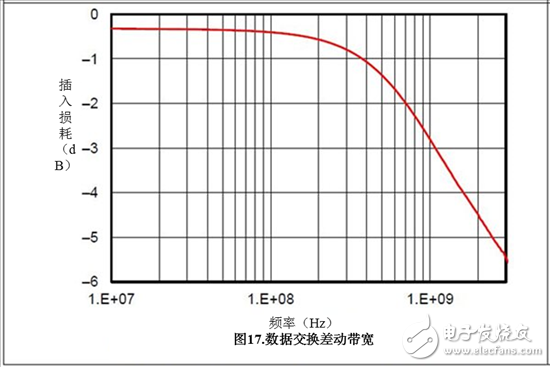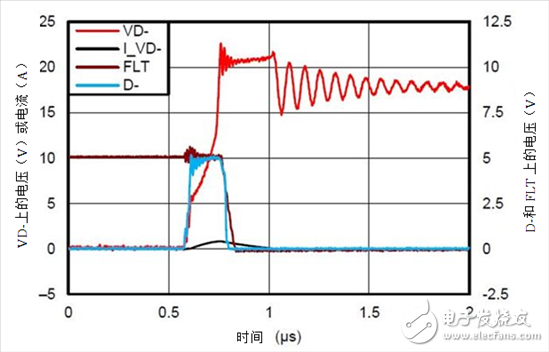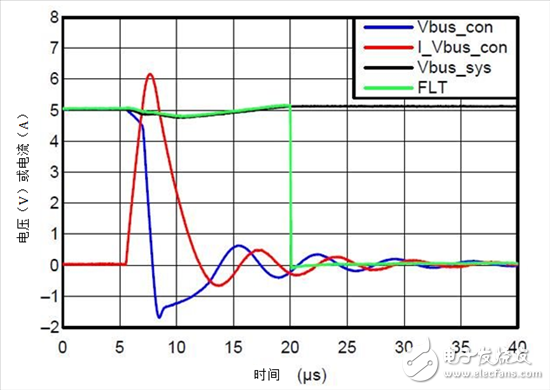Optimize car USB circuit to prevent battery short circuit design
Automakers continue to use infotainment systems as an extension of the multimedia experience. The USB interface has been an essential element of the infotainment architecture, so manufacturers have embraced this already consumer-centric interface with stricter protection requirements. These requirements require the prevention of short circuits in the vehicle battery during assembly, manufacturing or maintenance. For example, if the long wire harness that connects the head unit to a different connection module is damaged, all pins can be shorted to a 12V car battery. Other potential failure mechanisms include the use of non-compliant adapters, cables or chargers; mechanical distortion of the USB connector or cable; or any kind of debris entering the connector and shorting the data line to VBUS.
In the first part of the two-part series, I will illustrate the best way to prevent USB circuits from being shorted by battery shorts. In my next post, I will expand the best way to optimize your car's USB battery short-circuit design.
When designing a USB anti-battery short circuit, always keep in mind three main aspects:
Protect the bandwidth of the solution.
Clamping voltage and response time behavior.
Overcurrent and short-to-ground characteristics.
In the past, it was not possible to find a USB 2.0 anti-battery short-circuit solution that would solve all three aspects, but TI's new TPD3S714-Q1 series of anti-battery short-circuit protection devices can help solve these common problems.
bandwidth
Signal integrity is one of the biggest challenges designers face in automotive USB applications. Since USB 2.0 supports data transfer rates of up to 480 Mbps, any small amount of capacitance added to the wires can distort the signal and cause data transfer failures. This complicates the designer's task in finding a solution that not only protects sensitive electronics from high voltage and current spikes, but also maintains optimal signal integrity.
The TPD3S714-Q1 is a single-chip solution for battery-to-battery short-circuit, short-circuit and electrostatic discharge (ESD) of VBUS and data lines for USB connectors. The integrated data exchange provides twice the high bandwidth for minimal signal attenuation while providing up to 18V protection against battery short-circuit. Figure 1 is an insertion loss diagram highlighting high-speed data exchange using a 1GHz-3dB bandwidth.

Figure 1: TPD3S714-Q1 Data Exchange Differential Bandwidth
You can use an eye diagram to analyze the effect of line capacitance on bandwidth. The measured minimum and maximum voltage levels and jitter make it possible to expose any problems in USB data line transmission. The high 1GHz bandwidth allows for USB 2.0 high speed applications. A small margin above the 720MHz bandwidth also helps maintain a common clear USB 2.0 eye diagram with a long stay in the automotive USB environment. Figure 2 is an example of a USB 2.0 eye diagram.
Figure 2: USB 2.0 Eye Diagram of the TPD3S714-Q1
Clamping voltage and response time
Although bandwidth is one of the most important features to remember when choosing a protection solution, you must also ensure that the clamp voltage is low enough to protect against any battery shorts or ESD events in downstream circuits. In addition, you should design overvoltage field-effect transistors (FETs) with fast turn-off times to quickly protect the upstream system-on-chip (SoC) from unwanted voltage and current spikes (SoCs).
Protection against battery short-circuit protection on the VBUS, D+ and D- pins prevents any overvoltage conditions on the internal circuitry of the system. On these pins, the TPD3S714-Q1 handles overvoltages up to 18V for hot swap and DC events. The overvoltage protection circuit provides the industry's most reliable protection against battery short-circuit isolation, helping to improve system-level protection. Figure 3 shows the 5V clamp voltage during a short-to-18V fault, highlighting an ultra-fast response time of 200ns on the data path.

Figure 3: TPD3S714-Q1 data conversion short circuit to 18V response waveform
Overcurrent and short to ground
Choosing a bad overcurrent protection circuit can be an obstacle to the rapid launch of the product. During an overcurrent event, the amount of significant current flowing through the system side may cause the upstream 5V rail to power down or power down, and potentially reduce or reset multiple integrated circuits (ICs) connected to the shared rail. The purpose of the overcurrent protection device is to limit the amount of current that can be drawn by the USB port, as in a short-to-ground situation. In addition, the USB 2.0 specification requires the use of overcurrent protection in any USB powered design.
Figure 4 depicts a short-to-ground event in which the system voltage drops to less than 200mV, keeping the shared 5V rail stable and properly isolating the fault. The TPD3S714-Q1 integrates an accurate current-limited load switch of up to 0.5A for automatic current limiting during overcurrent events. The internal FET switch prevents excess current from flowing through the upstream device, preventing system side reset.

Figure 4: TPD3S714-Q1 VBUS short-to-ground response waveform
Optical fiber transceivers are generally used in actual network environments where Ethernet cables cannot be covered and optical fibers must be used to extend the transmission distance. At the same time, they also play a huge role in helping to connect the last mile of optical fiber lines to metropolitan area networks and outer networks. The role of. With the optical fiber transceiver, it also provides a cheap solution for users who need to upgrade the system from copper wire to optical fiber, and for users who lack funds, manpower or time. The function of the optical fiber transceiver is to convert the electrical signal we want to send into an optical signal and send it out. At the same time, it can convert the received optical signal into an electrical signal and input it to our receiving end.
1G Bidi Transeciver,Bidi Transceiver Ic,Bidi Optical Transceiver,Bidi Transeciver For Sale
Nanjing Jisu Shitong Technology Co., Ltd , https://www.netairs.com